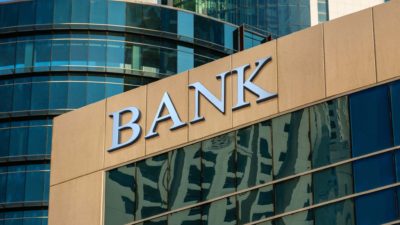The Commonwealth Bank of Australia (ASX: CBA) share price has been through a rough time since 6 June 2022, falling by more than 13%. That could be pretty unlucky for shareholders who bought just before the drop.
CBA and the other big four ASX bank shares – Westpac Banking Corp (ASX: WBC), National Australia Bank Ltd (ASX: NAB) and Australia and New Zealand Banking Group Ltd (ASX: ANZ) – have all fallen amid the Reserve Bank of Australia (RBA) response to the elevated rate of inflation.
Last month, Australia's central bank increased the interest rate by 50 basis points, or 0.5%.
What does that mean for banks? Well, the market sent the CBA share lower.
Why? It's a good question because the logic before was that higher interest rates would be good for bank profitability, helping banks' net interest margin (NIM).
However, investors may not have factored in that the RBA would increase interest rates as much as is happening now. What's more, the interest rate is expected to go quite high (compared to the 0.1% it was sitting at before).
High interest rate to cause more loan losses?
Experts accept that a higher interest rate will help the banks' NIM. However, the difficulty could be how much this hurts loan growth. The risk is it could lead to a greater number of loan losses and arrears.
Brokers Morgan Stanley and Morgans, as two examples, have both warned that the big four ASX banks and the CBA share price could hurt from elevated losses on loans.
Households have been saving during the COVID-19 period. Indeed, the RBA governor said that household balance sheets are "generally in good shape" and that "the household saving rate also remains higher than before the pandemic and many households have built up large financial buffers."
How high could interest rates go?
The RBA will soon announce whether interest rates are increasing a further 25 basis points or 50 basis points in July. Last month, Lowe said:
The Board expects to take further steps in the process of normalising monetary conditions in Australia over the months ahead. The size and timing of future interest rate increases will be guided by the incoming data and the Board's assessment of the outlook for inflation and the labour market. The Board is committed to doing what is necessary to ensure that inflation in Australia returns to target over time.
The RBA thinks that inflation could reach 7% by the end of the year. Investors' expectations imply that the RBA interest rate could reach 3% by the end of 2022.
Is the CBA share price going to go higher?
No one has a crystal ball to know what happens next. But there are plenty of brokers that are negative on CBA right now.
Morgan Stanley is 'underweight' on the business. Macquarie rates CBA as 'underperform'. Meanwhile, Citi has a 'sell' rating on CBA.
Citi suggests that the CBA valuation premium could reduce to the other big banks during this period. However, the price target is $90.75, which is where it's currently trading.
The Morgan Stanley price target is $79, implying a drop of more than 10%. The broker thinks CBA might not just see higher loan losses, but its NIM could be impacted by higher funding costs, including paying savers more. In other words, higher interest rates won't flow straight onto the bottom line.
The broker Macquarie has a price target of $78 on the business, implying a decline of 14%. Macquarie said that while the NIM could rise in the short term, there may be impacts from slower loan book growth and higher losses.









